Promotion of Ionic Conductivity of PEO-Based Solid Electrolyte Using Ultrasonic Vibration
Abstract
1. Introduction
2. Materials and Methods
2.1. Materials
2.2. Experimental Method
2.2.1. Preparation of Polymer Solid Electrolyte Membrane
2.2.2. Ultrasonic Treatment of the Solid Electrolyte
2.3. Characterization
2.3.1. AC Impedance
2.3.2. Direct Current (DC) Polarization
2.3.3. Linear Sweep Voltammetry (LSV)
2.3.4. Scanning Electron Microscope (SEM)
2.3.5. Mechanical Performance Test
2.3.6. Thermogravimetric Analysis (TGA)
2.3.7. Fourier Transform Infrared (FTIR) Spectroscopy
2.3.8. X-ray Diffraction (XRD)
3. Results
3.1. AC Impedance and Ionic Conductivity
3.2. Electronic Conductivity
3.3. Electrochemical Window
3.4. Mechanical Strength
3.5. Morphology
3.6. Thermal Stability
3.7. FTIR Analysis
3.8. Crystallinity
4. Conclusions
- The ultrasonic treatment significantly improved the ionic conductivity of the PEO-based electrolyte. The ionic conductivity was increased by 78%. In addition, the ultrasonic treatment did not obviously affect the electronic conductivity. The prepared electrolyte had a wide electrochemical window, even at 80 °C.
- The ultrasonic treatment broke PEO grains and melted them with the frictional heat at the boundary. Due to the slight melting and fast solidifying process, the crystallization was suppressed. The ultrasonic vibration effectively reduced the crystallinity by 6.2%, which increased the migration channels of lithium ions. Smaller grains decreased the tortuosity effect as well, shortening the Li+ transport path, and thus improved the ionic conductivity.
- The ultrasonic treatment compressed the electrolyte to produce plastic flow of the material, which made the electrolyte structure more compact. The density of EO units was thus increased in the amorphous phase, providing multiple electron-donor coordination sites for the Li+. The hopping distance of the ion between donors was decreased as well, which also facilitated the migration.
- The ultrasonic treatment did not alter the chemical composition and thermal stability of the solid electrolyte. The results show no negative effects produced, such as ultrasonic-induced bond break or thermal degradation.
- The ultrasonic treatment improved the mechanical property of the electrolyte. The plasticity was improved, though the yield strength was slightly reduced. The tensile strength and elongation were both increased significantly.
Author Contributions
Funding
Conflicts of Interest
References
- Wang, L.; Li, X.; Yang, W. Enhancement of electrochemical properties of hot-pressed poly(ethylene oxide)-based nanocomposite polymer electrolyte films for all-solid-state lithium polymer batteries. Electrochim. Acta 2010, 55, 1895–1899. [Google Scholar] [CrossRef]
- Mueller, T.; Hautier, G.; Jain, A.; Ceder, G. Evaluation of tavorite-structured cathode materials for lithium-ion batteries using high-throughput computing. Chem. Mater. 2011, 23, 3854–3862. [Google Scholar] [CrossRef]
- Fujimura, K.; Seko, A.; Koyama, Y.; Kuwabara, A.; Kishida, I.; Shitara, K.; Fisher, C.A.J.; Moriwake, H.; Tanaka, I. Accelerated materials design of lithium superionic conductors based on first-principles calculations and machine learning algorithms. Adv. Energy Mater. 2013, 3, 980–985. [Google Scholar] [CrossRef]
- Wang, Y.; Richards, W.D.; Ong, S.P.; Miara, L.J.; Kim, J.C.; Mo, Y.; Ceder, G. Design principles for solid-state lithium superionic conductors. Nat. Mater. 2015, 14, 1026–1031. [Google Scholar] [CrossRef] [PubMed]
- Hautier, G.; Jain, A.; Chen, H.; Moore, C.; Ong, S.P.; Ceder, G. Novel mixed polyanions lithium-ion battery cathode materials predicted by high-throughput ab initio computations. J. Mater. Chem. 2011, 21, 17147–17153. [Google Scholar] [CrossRef]
- Hautier, G.; Fischer, C.; Ehrlacher, V.; Jain, A.; Ceder, G. Data mined ionic substitutions for the discovery of new compounds. Inorg. Chem. 2011, 50, 656–663. [Google Scholar] [CrossRef]
- Jalem, R.; Aoyama, T.; Nakayama, M.; Nogami, M. Cheminform abstract: Multivariate method-assisted ab initio study of olivine-type limxo4 (main group m2+–x5+ and m3+–x4+) compositions as potential solid electrolytes. Cheminform 2012, 43. [Google Scholar] [CrossRef]
- Lee, K.J.; Yi, E.J.; Kim, G.; Hwang, H. Synthesis of ceramic/polymer nanocomposite electrolytes for all-solid-state batteries. J. Nanosci. Nanotechnol. 2020, 20, 4494–4497. [Google Scholar] [CrossRef]
- Chintapalli, S.; Frech, R. Effect of plasticizers on high molecular weight peo-licf_3so_3 complexes. Solid State Ion. 1996, 86, 341–346. [Google Scholar] [CrossRef]
- Kumar, Y.; Hashmi, S.A.; Pandey, G.P. Lithium ion transport and ion–polymer interaction in peo based polymer electrolyte plasticized with ionic liquid. Solid State Ion. 2011, 201, 73–80. [Google Scholar] [CrossRef]
- Scrosati, B.; Croce, F.; Panero, S. Progress in lithium polymer battery R&D. J. Power Sources 2001, 100, 93–100. [Google Scholar] [CrossRef]
- Tan, S.M.; Johan, M.R. Effects of MnO2 nano-particles on the conductivity of pmma-peo-liclo 4 ec polymer electrolytes. Ionics 2011, 17, 485–490. [Google Scholar] [CrossRef]
- Nairn, K.; Forsyth, M.; Every, H.; Greville, M.; Macfarlane, D.R. Polymer-ceramic ion-conducting composites. Solid State Ion. 1996, 86, 589–593. [Google Scholar] [CrossRef]
- Yu, X.Y.; Xiao, M.; Wang, S.J.; Zhao, Q.Q.; Meng, Y.Z. Fabrication and characterization of peo/ppc polymer electrolyte for lithium-ion battery. J. Appl. Polym. Sci. 2010, 115, 2718–2722. [Google Scholar] [CrossRef]
- Niitani, T.; Shimada, M.; Kawamura, K.; Dokko, K.; Rho, Y.H.; Kanamura, K. Synthesis of li[sup +] ion conductive peo-pst block copolymer electrolyte with microphase separation structure. Electrochem. Solid State Lett. 2005, 8, A385–A388. [Google Scholar] [CrossRef]
- Harras, B.; Cole, K.C.; Vu-Khanh, T. Optimization of the ultrasonic welding of peek-carbon composites. J. Reinf. Plast. Compos. 1996, 15, 174–182. [Google Scholar] [CrossRef]
- O’Shaughnessey, P.G. Modeling and experimental investigation of induction welding of thermoplastic composites and comparison with other welding processes. J. Compos. Mater. 2016, 50. [Google Scholar] [CrossRef]
- Choi, J.; Isayev, A.I. Natural rubber/styrene butadiene rubber blends prepared by ultrasonically aided extrusion. J. Elastomers Plast. 2015, 47, 170–193. [Google Scholar] [CrossRef]
- Isayev, A.; Chang, K.H. Novel ultrasonic process for in-situ copolymer formation and compatibilization of immiscible polymers. Polym. Eng. Sci. 2003, 43, 91–101. [Google Scholar] [CrossRef]
- Bera, M.; Rana, A.; Chowdhuri, D.S.; Hazari, D. A new 3d silver(i) coordination polymer with octadentate diglycolate ligand having silver—silver bond. J. Inorg. Organomet. Polym. Mater. 2012, 22, 1074–1080. [Google Scholar] [CrossRef]
- Rizzolo, R.H.; Walczyk, D.F. Ultrasonic consolidation of thermoplastic composite prepreg for automated fiber placement. J. Thermoplast. Compos. Mater. 2016, 29, 1480–1497. [Google Scholar] [CrossRef]
- Fernandez Villegas, I.; Van Moorleghem, R. Ultrasonic welding of carbon/epoxy and carbon/peek composites through a pei thermoplastic coupling layer. Compos. Part A Appl. Sci. Manuf. 2018, 109, 75–83. [Google Scholar] [CrossRef]
- Chu, Q.; Li, Y.; Xiao, J.; Huan, D.; Zhang, X. Processing and characterization of the thermoplastic composites manufactured by ultrasonic vibration-assisted automated fiber placement. J. Thermoplast. Compos. Mater. 2018, 31, 339–358. [Google Scholar] [CrossRef]
- Li, X.; Cheng, S.; Zheng, Y.; Li, C.Y. Morphology control in semicrystalline solid polymer electrolytes for lithium batteries. Mol. Syst. Des. Eng. 2019, 4, 793–803. [Google Scholar] [CrossRef]
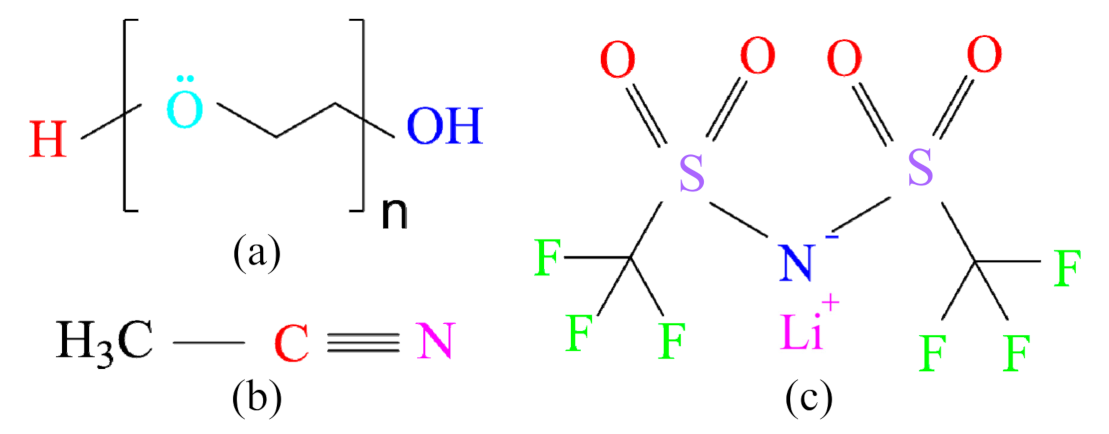



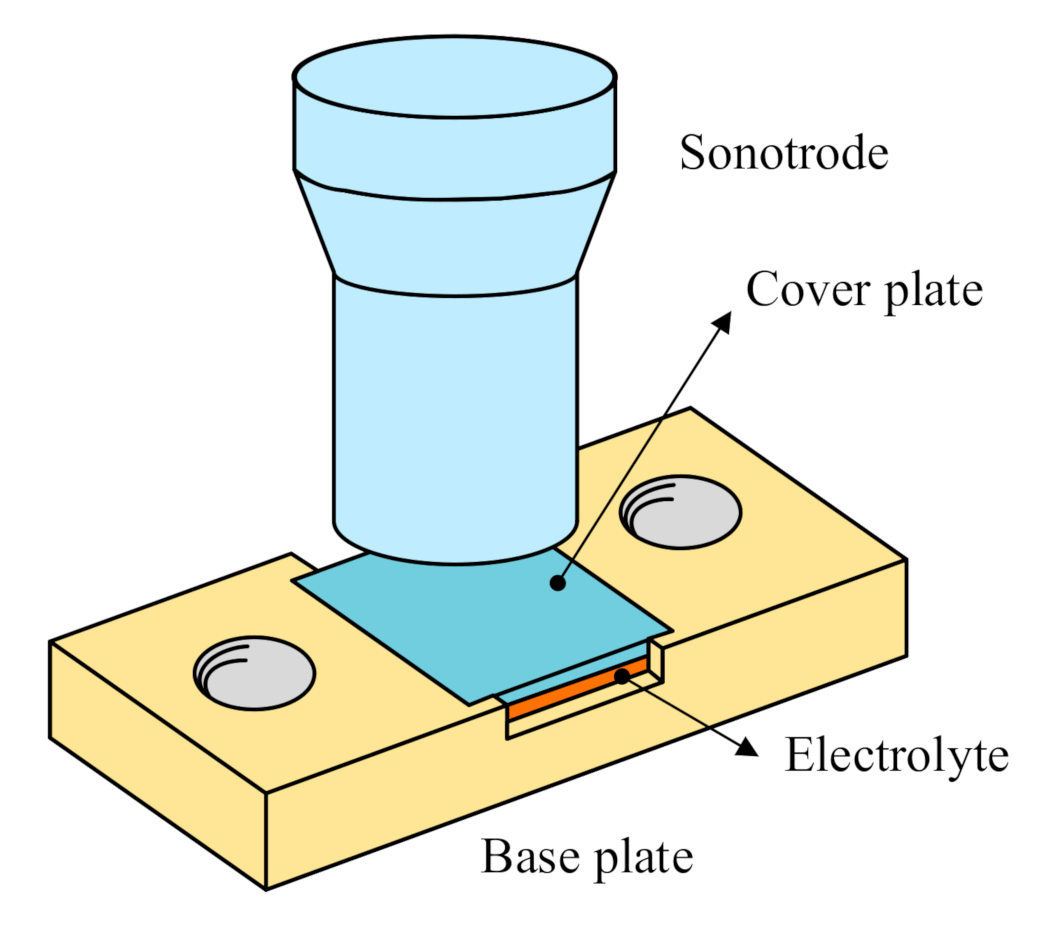



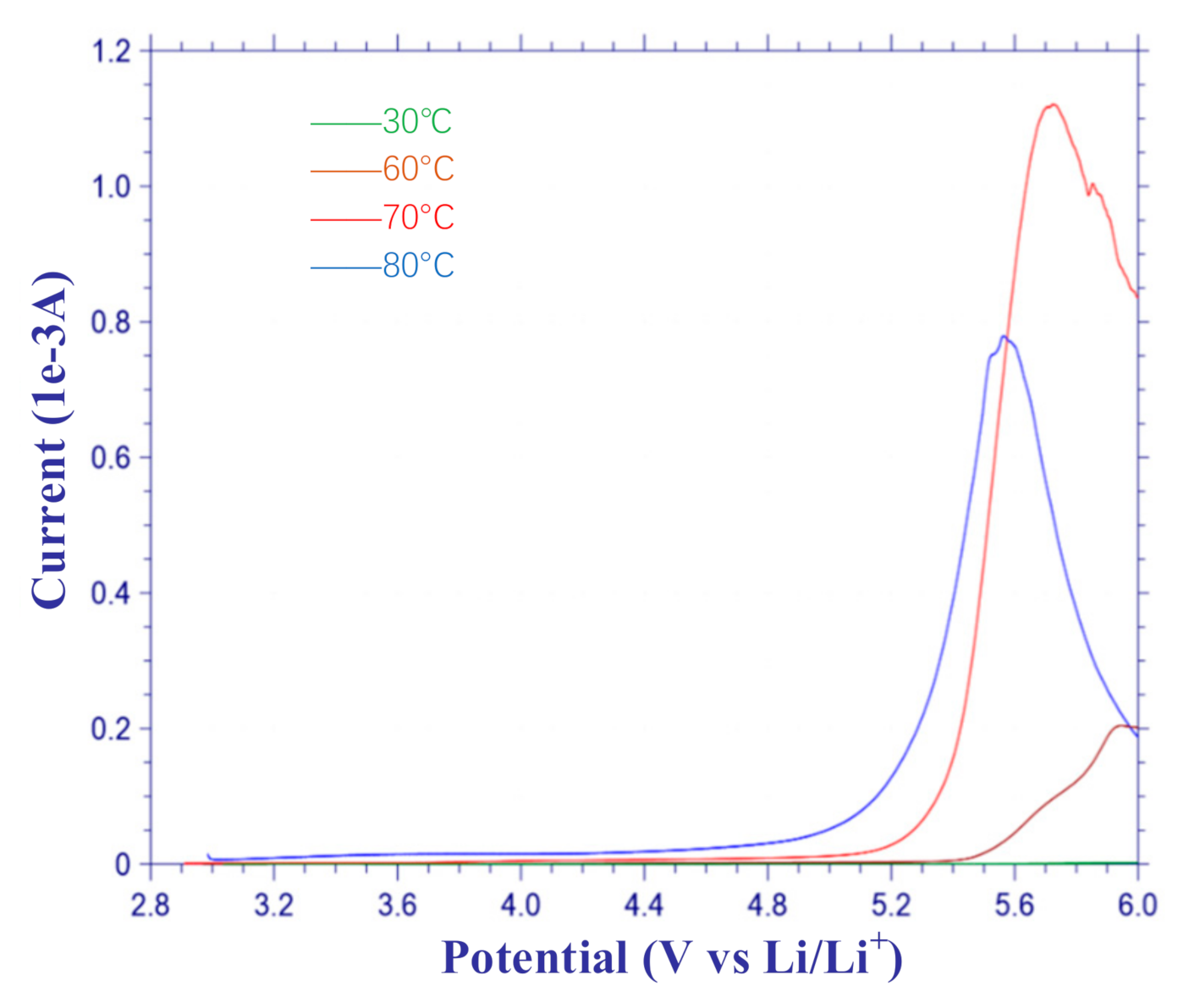
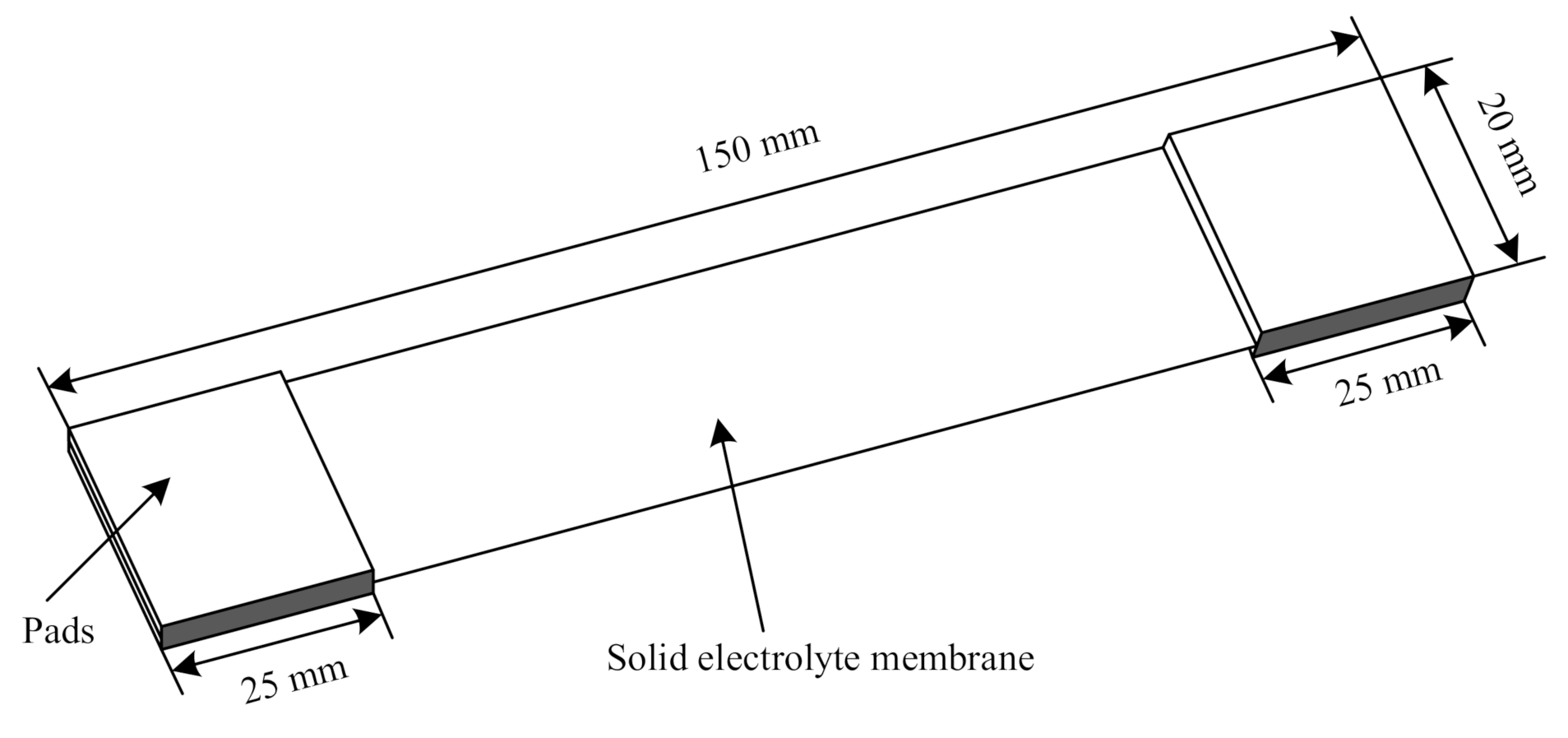
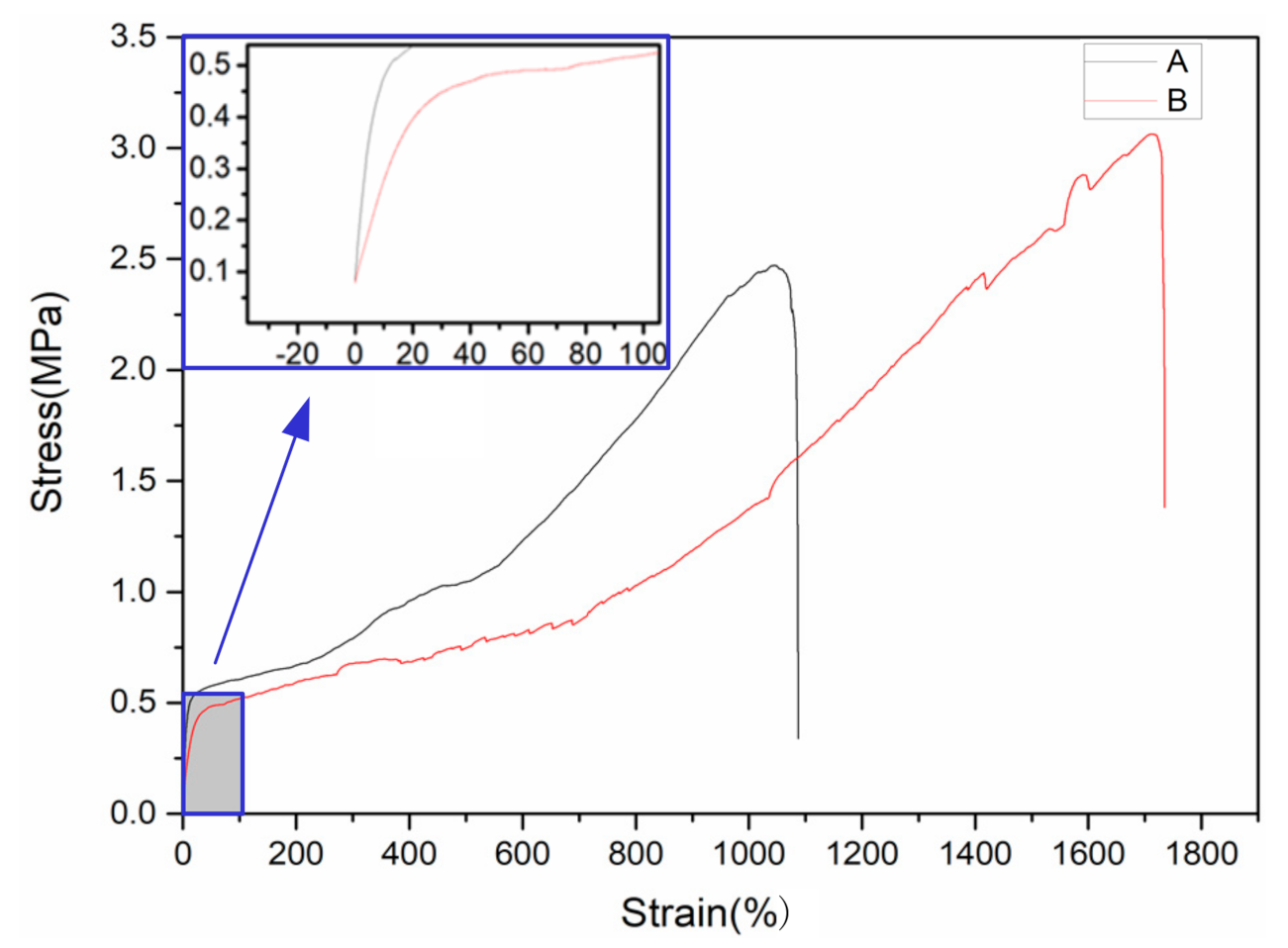

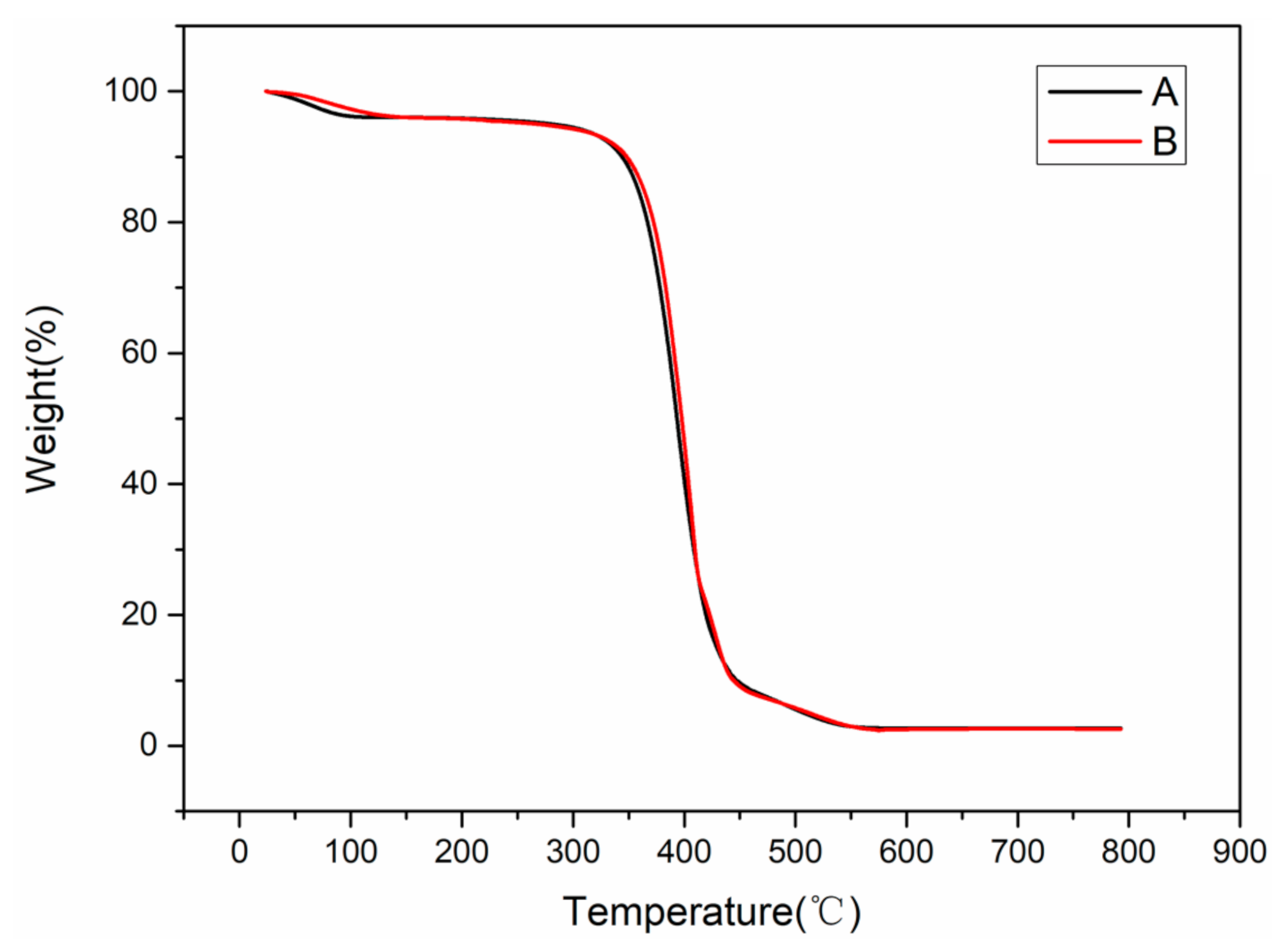
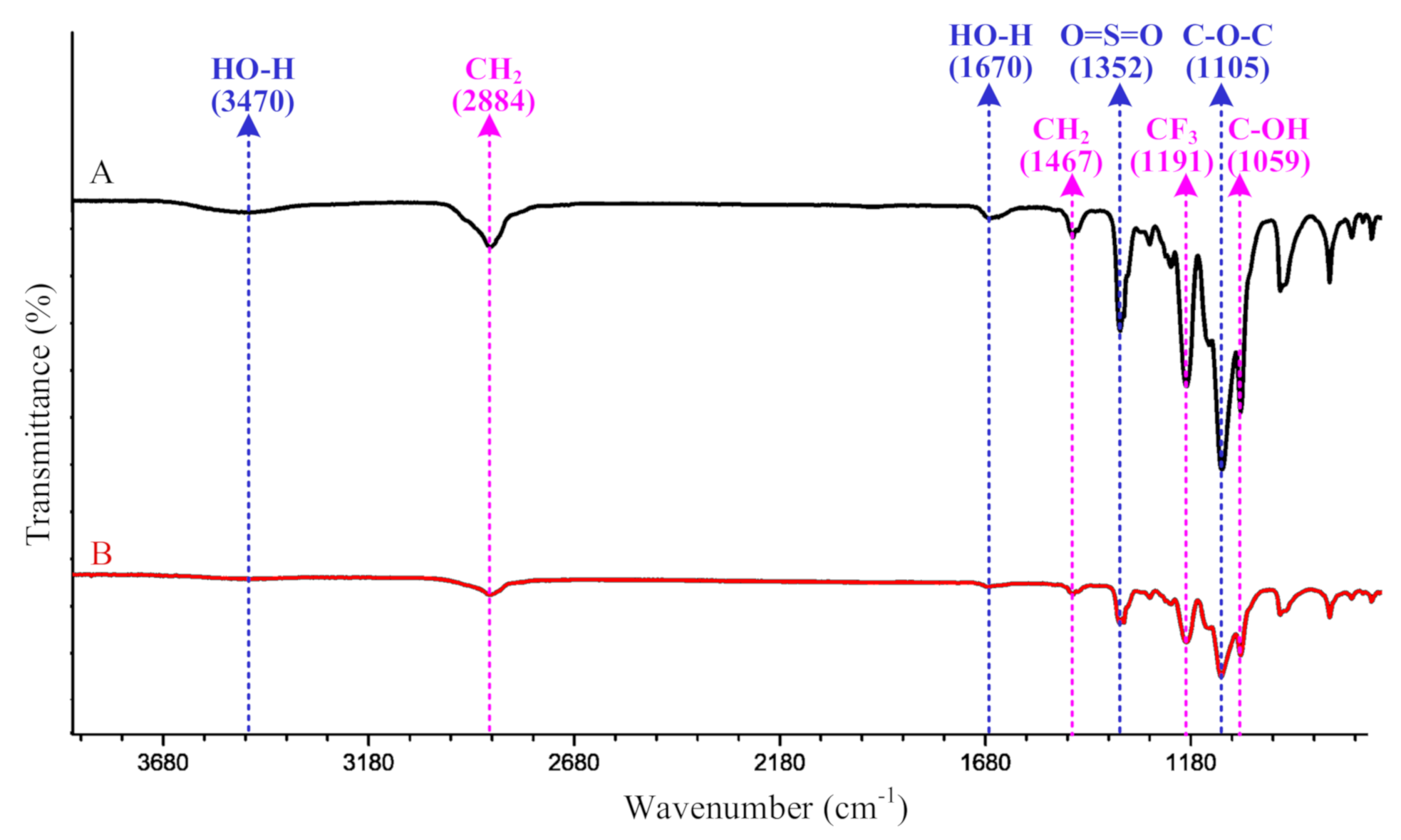

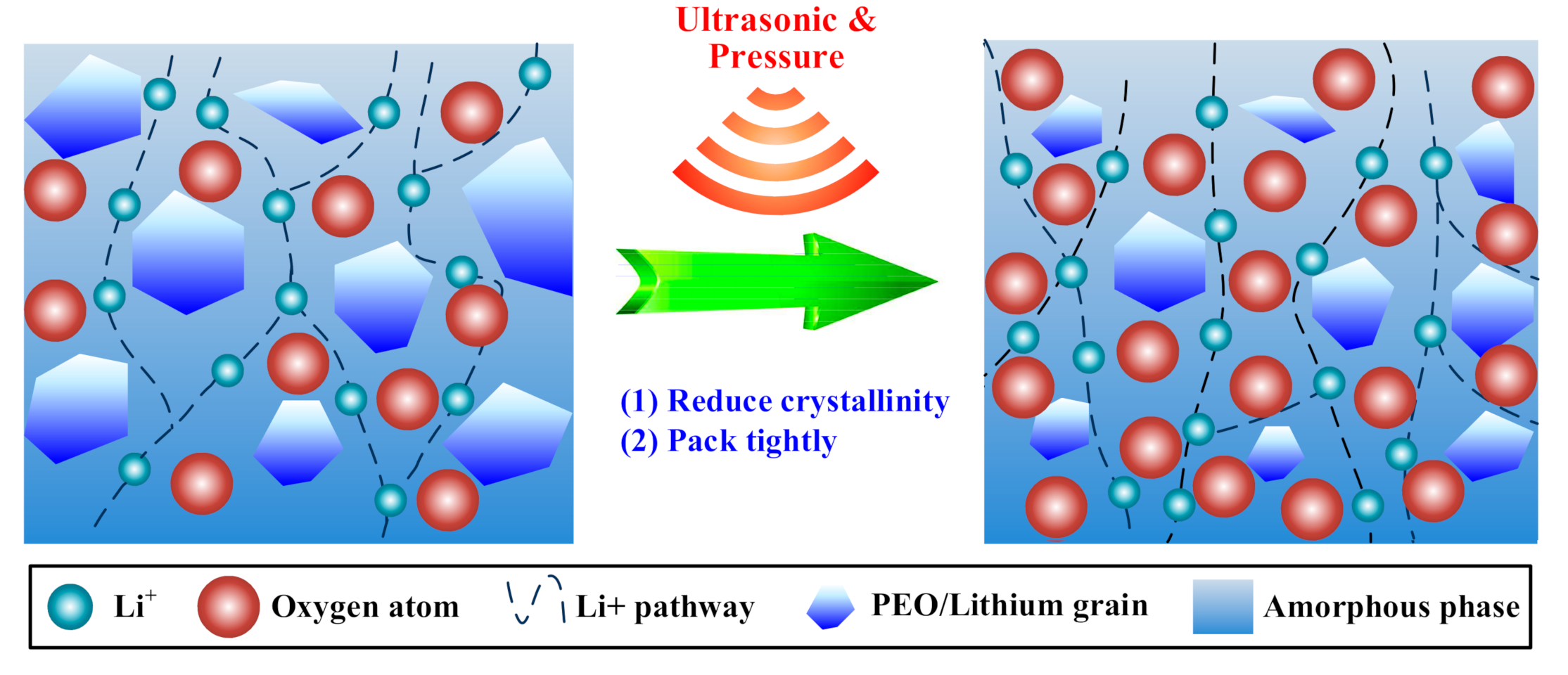
| Impedance (Ω) | Ionic Conductivity (S/cm) | |||
|---|---|---|---|---|
| 25 °C | 45 °C | 25 °C | 45 °C | |
| A | 1960 | 144 | 1.8 × 10−6 | 2.4 × 10−5 |
| B | 1100 | 99 | 3.2 × 10−6 | 3.6 × 10−5 |
© 2020 by the authors. Licensee MDPI, Basel, Switzerland. This article is an open access article distributed under the terms and conditions of the Creative Commons Attribution (CC BY) license (http://creativecommons.org/licenses/by/4.0/).
Share and Cite
Wang, H.; Cui, X.; Zhang, C.; Gao, H.; Du, W.; Chen, Y. Promotion of Ionic Conductivity of PEO-Based Solid Electrolyte Using Ultrasonic Vibration. Polymers 2020, 12, 1889. https://doi.org/10.3390/polym12091889
Wang H, Cui X, Zhang C, Gao H, Du W, Chen Y. Promotion of Ionic Conductivity of PEO-Based Solid Electrolyte Using Ultrasonic Vibration. Polymers. 2020; 12(9):1889. https://doi.org/10.3390/polym12091889
Chicago/Turabian StyleWang, Hui, Xiaodong Cui, Cong Zhang, Huang Gao, Wei Du, and Yizhe Chen. 2020. "Promotion of Ionic Conductivity of PEO-Based Solid Electrolyte Using Ultrasonic Vibration" Polymers 12, no. 9: 1889. https://doi.org/10.3390/polym12091889
APA StyleWang, H., Cui, X., Zhang, C., Gao, H., Du, W., & Chen, Y. (2020). Promotion of Ionic Conductivity of PEO-Based Solid Electrolyte Using Ultrasonic Vibration. Polymers, 12(9), 1889. https://doi.org/10.3390/polym12091889





